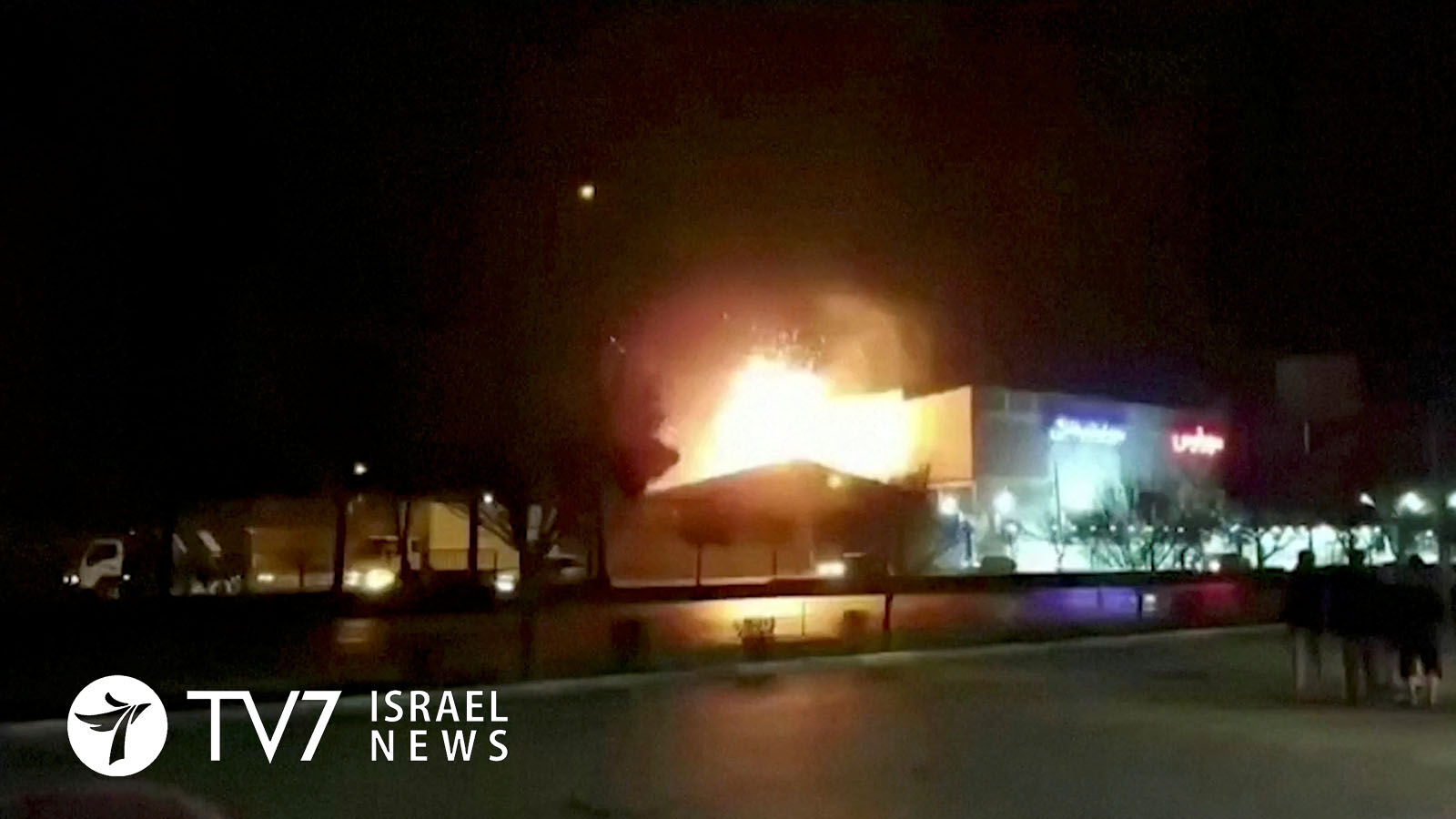Iranian media video showed a flash of light at military industry factory near the central city of Isfahan, which the official news agency IRNA described as an ammunition factory.
By Jonathan Hessen and Erin Viner
Footage also showed emergency vehicles and fire trucks outside the complex, which reportedly included a manufacturing site of both offensive Unmanned Aerial Vehicles (UAVs, drones) and Ballistic Missiles among other unknown munitions.
The sophisticated strike of the heavily guarded compound clearly caught the Ayatollah regime by surprise, and it quickly sought to diminish the purported impact by claiming that Iran’s aerial defense array managed to intercept the incoming drones.
“Around 23:30 (2000 GMT) on Saturday night, an unsuccessful attack was carried out using micro Aerial Vehicles (MAVs) on one of the ministry’s workshop sites,” said a Defense Ministry statement carried by state TV, claiming one drone was shot down “and the other two were caught in defense traps and blew up. It caused only minor damage to the roof of a workshop building. There were no casualties.”
The attack “has not affected our installations and mission … and such blind measures will not have an impact on the continuation of the country’s progress,” added the statement.
There was no immediate claim of responsibility for the blast, which came amid tension with the West over Iranian nuclear activity and supply of armed UAVs to Russia for use in its war in Ukraine, as well as months of anti-government demonstrations at home.
Iran’s Foreign Minister said the “cowardly” attack was aimed at creating “insecurity” in Iran. “Such actions will not impact our experts’ determination to progress in our peaceful nuclear work,” Hossein Amirabdollahian told reporters in televised remarks.
Saudi media reported that the the United States and ‘another unnamed country’ were behind the attack on a ballistic missile storage site.
While this and other initial reports alluded to American or Israeli responsibility, concerns over plausible Iranian retaliation evidently prompted US officials and other people familiar with the operation to leak to the Wall Street Journal that Israel was behind the attack. Nevertheless, senior Israeli intelligence officials, who spoke with TV7, have not confirmed, nor denied, Israel’s alleged responsibility.
Kremlin Spokesman Dmitry Peskov condemned the attack “against a sovereign state,” revealed that Russia’s intelligence agencies are “analyzing the information now to understand, more or less, the whole picture of what happened,” as only a limited number of countries are capable of executing such a precise strike.
Separately, IRNA reported early on Sunday a massive fire at a motor oil factory in an industrial zone near the northwestern city of Tabriz. It gave no information about the cause of that blaze.
The Islamic Republic has in the past accused arch-enemy Israel of planning attacks using agents inside Iranian territory. Last July, Tehran arrested what it called a ‘sabotage team’ of Kurdish militants working for Israel, who planned to blow up a “sensitive” defense industry center in Isfahan.
An Israeli military spokesperson declined comment when asked if Israel had a connection to the latest incident. Jerusalem has long said it could attack Iran if diplomacy fails to curb Iranian nuclear or ballistic missile development programs but maintains a policy of withholding comment on specific incidents.
A senior aide to Ukrainian President Volodymyr Zelenskyy linked the incident directly to Russia’s unprovoked offensive against his nation. “War logic is inexorable & murderous. It bills the authors & accomplices strictly,” Mykhailo Podolyak tweeted. “Explosive night in Iran – drone & missile production, oil refineries. Did warn you.”
Several Iranian nuclear sites are located in Isfahan province, including Natanz – the key site of uranium enrichment – which Tehran accuses Israel of sabotaging in 2021. There have been several explosions and fires at Iranian military, nuclear and industrial sites in recent years.
